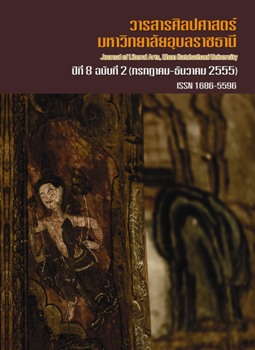การประเมินการบริหารโรงเรียนขั้นพื้นฐาน ตามแนวชายแดนไทย-กัมพูชา อีสานใต้
Main Article Content
บทคัดย่อ
ADMINISTRATIVE EVALUATION OF BASIC EDUCATION SCHOOLS OF SOUTHERN ISAAN ALONG THE THAI-CAMBODIA BORDER
The purposes of this evaluation were 1) to evaluate the context of Basic Educational Schools of Southern Isaan along the Thai-Cambodian border, 2) to evaluate the input of Basic Educational Schools of Southern Isaan along the Thai-Cambodian border, 3) to evaluate the administrative procedure of Basic Educational Schools of Southern Isaan along the Thai-Cambodian border, 4) to evaluate the curriculum and teaching of Basic Educational Schools of Southern Isaan along the Thai-Cambodian border, and 5) to evaluate the output of Basic Educational Schools of Southern Isaan along the Thai-Cambodian border. The Evaluation procedure. There were 2 methods of evaluation. (1) CIPP Evaluation.The population consisted of 133 Basic Educational Schools in education level of Grade 1 and Grade 2 of Southern Isaan along the Thai- Cambodian border under the Basic Education Commission.The sample consisted of randomly selected 40 schools. The questionnaires were used for this evaluationtool distributed to administrators, teachers, and parents of student, totally 1, 414 person. The statistics used to analyze the data were frequency, percentage, mean and standard deviation. (2) Naturalistic Evaluation. Two schools were selected as a case study. The researcher collected the data by observing and interviewing from administrators, teachers, and parents of student. The contents were analyzed to make conclusion. The evaluation findings were as follows: 1) In the aspect of “context”, it was shown that most of the parents were poor. The local dialects and Thai language were used in communication. People were very strict to the customs, and believed in the black magic. The community was safe at a moderate level (56.30%) . There were the gambling places at a moderate level (38.30%) . There were drug-addicted people in some community (34.60%) . Most of the people respected in the elderly people. They had low educational background, and were not interested in studying. They did not encourage their children to continue studying in the higher level; however, they were really willing to cooperate with the school. 2) In the aspect of “input”, it was found that all the school administrators were male, and most of them graduated the Master degree. The administrative budget was gotten from the government, in the amount of 300, 000 baht per year, and from the other sources about 100, 000 baht per year. Most of the instructors graduated the Bachelor degree, but they did not teach the subjects that related to their majors. The teaching materials were not enough and up to date. The cultural organization of the schools along the border was the family culture (35%) . 3) In the aspect of “administrative procedure”, it was shown that most of the schools administrators used the participative management. Some school administrators used the Deming Cycle (PDCA) , and school-based management (SBM) . The quality of management of the school administrators, in the aspects of general management, budgeting, and academic were at a high level, whereas, the aspect of personnel was at a moderate level. 4) In the aspect of “curriculum and teaching”, it was revealed that the curriculum was accordant with the requirements of the local at a high level (47.50%) , and it was also accordant with the requirements of the students at a high level (52.50%) . The schools (47.10%) had developed the curriculum rightfully. The teachers (97.50%) had the lesson plans. The teachers (81.10%) used the student-center teaching method. Teachers used the teaching materials at a moderate level (54.30) . The instructors (65%) used the multiple-choices test for the measurement and evaluation, whereas, 47.90 % of instructors used the authentic practices for the measurement and evaluation. All the instructors (100%) had announced the test results, or the evaluation results to the students. 5) In the aspect of “output”, it was shown that most of the students got the O-NET, and NT test scores under the average score. The school administrators (23%) were not satisfied with the test scores. The instructors (47.10%) were not satisfied with the test scores. The schools (75%) passed the second external quality assessment by the Office for National Education Standards and Quality Assessment. The school administrators and instructors were satisfied with the result of quality assessment at a high level, the parents satisfied the school administration at a high level, The students continue studying at a higher level, in the amount of 16 students per year. Most of the parents encouraged two children to continue studying at a higher level, whereas, a few parents encouraged one or three children to continue studying at a higher level. The family members in some families addicted to the gambling (23.10%) , and were drug-addicted (36.30%) . When the researcher used the Naturalistic Evaluation by observing and interviewing, the findings were shown accordantly with the CIPP Evaluation, in all of the aspects.


